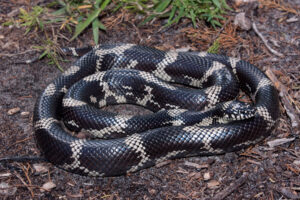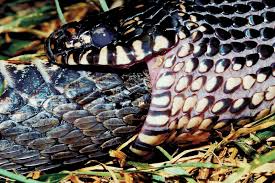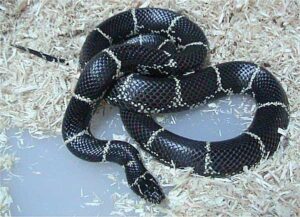Are king snakes good pets? This is a question that often arises among reptile enthusiasts and prospective pet owners alike. King snakes, known for their striking appearance and intriguing behavior, have become increasingly popular in the pet trade.
However, before bringing one into your home, it’s essential to understand the unique characteristics and care requirements of these fascinating serpents. In this article, we’ll delve into the world of king snakes, examining their suitability as pets, their care needs, and what makes them stand out among other reptilian companions.
Are king snakes good pets?

King snakes can make excellent pets for reptile enthusiasts. They are generally docile, relatively easy to care for, and come in a variety of beautiful colors and patterns. Additionally, king snakes are known for their ability to handle a wide range of temperatures, making them suitable for beginners.
King snakes require a suitable enclosure, which should include hiding spots, proper substrate, and temperature gradients. They thrive in temperatures between 75-85°F (24-29°C) during the day, with a slight drop at night. Humidity levels should be maintained between 40-60%.
Feeding king snakes is relatively straightforward as they are carnivorous and primarily eat rodents. Pre-killed mice or rats are typically offered, with the size of the prey increasing as the snake grows.
Regular handling is also essential for king snakes to help them become accustomed to human interaction. However, it’s crucial to ensure that your hands are clean and that you approach them gently to avoid stressing them out.
Before getting any pet, it’s essential to do thorough research to ensure you can meet its needs throughout its life. Additionally, it’s a good idea to purchase your snake from a reputable breeder to ensure you get a healthy animal. With proper care, a king snake can be a rewarding and fascinating pet.
Characteristics of King Snakes
King snakes (Lampropeltis spp.) are non-venomous constrictors native to North and Central America. Here are some key characteristics of king snakes:
- Size: King snakes typically range in size from 2 to 6 feet (0.6 to 1.8 meters) in length, depending on the species. Some species, like the California king snake, can grow up to 4-6 feet, while others, like the Mexican black king snake, tend to stay smaller, around 3-4 feet.
- Color and Pattern: King snakes are known for their striking coloration and patterns, which vary depending on the species and locality. They come in a wide range of colors, including black, brown, red, yellow, orange, white, and cream. Many species have distinctive banding or speckling patterns, while others may have solid colors.
- Diet: King snakes are carnivorous and primarily feed on rodents, birds, lizards, and other snakes. In captivity, they are typically fed pre-killed rodents, such as mice or rats.
- Habitat: King snakes inhabit a variety of habitats, including forests, grasslands, deserts, and scrublands. They are excellent climbers and may be found in trees, as well as on the ground.
- Behavior: King snakes are generally docile and can make good pets for reptile enthusiasts. They are known for their curious and exploratory nature. However, like all snakes, they may become defensive if they feel threatened.
- Reproduction: King snakes are oviparous, meaning they lay eggs. They typically lay clutches of 5 to 20 eggs, which are incubated for around 60 days before hatching.
- Longevity: With proper care, king snakes can live for 15 to 25 years in captivity, although some may live even longer.
- Defense Mechanisms: While king snakes are non-venomous, they have several defense mechanisms to protect themselves from predators. These include hissing, vibrating their tails, and releasing a foul-smelling musk.
Overall, king snakes are popular among reptile enthusiasts for their striking appearance, docile nature, and relatively easy care requirements.
Considerations Before Getting a King Snake
Before getting a king snake as a pet, there are several important considerations to keep in mind:
- Research: Learn as much as you can about king snakes before bringing one home. Understanding their habitat, diet, behavior, and specific care requirements is essential for providing proper care.
- Enclosure: Make sure you have a suitable enclosure set up before bringing your king snake home. The enclosure should be escape-proof, well-ventilated, and appropriately sized for your snake. It should also include hiding spots, a water dish, and appropriate substrate.
- Temperature and Humidity: King snakes require specific temperature and humidity levels to thrive. Make sure you have the appropriate heating and humidity sources set up in the enclosure, along with temperature gradients to allow your snake to regulate its body temperature.
- Feeding: King snakes are carnivorous and primarily eat rodents. Make sure you are comfortable feeding your snake pre-killed rodents, such as mice or rats. You’ll also need to provide the appropriate size of prey based on the size of your snake.
- Handling: While king snakes are generally docile, they may become defensive if they feel threatened. Make sure you are comfortable handling your snake and know how to do so safely. Always approach your snake calmly and gently to avoid stressing it out.
- Healthcare: Like all pets, king snakes require regular veterinary care to ensure they stay healthy. Find a reptile-savvy veterinarian in your area and be prepared for the potential costs associated with veterinary care.
- Lifespan: King snakes can live for 15 to 25 years or more in captivity. Make sure you are prepared for the long-term commitment of caring for a snake before bringing one home.
- Legal Considerations: Check the local regulations regarding keeping king snakes as pets in your area. Some species of king snakes may be protected, and there may be restrictions on keeping them as pets.
By considering these factors and doing thorough research before getting a king snake, you can ensure that you are prepared to provide the proper care and environment for your new pet.
Advantages of Keeping King Snakes as Pets

Keeping a king snake as a pet offers several advantages:
- Docile Nature: King snakes are generally docile and tolerant of handling, making them suitable pets for both beginner and experienced reptile enthusiasts.
- Variety of Colors and Patterns: King snakes come in a wide variety of colors and patterns, making them visually striking pets. From the vibrant colors of the California king snake to the sleek black of the Mexican black king snake, there is a king snake to suit every taste.
- Ease of Care: King snakes have relatively simple care requirements compared to some other reptile species. They are hardy animals that can tolerate a wide range of temperatures and are generally not prone to health problems when provided with the proper care.
- Long Lifespan: With proper care, king snakes can live for 15 to 25 years or more in captivity, providing a long-term pet relationship for their owners.
- Natural Pest Control: King snakes are excellent hunters and can help control rodent populations in your home or garden.
- Educational Opportunities: Keeping a king snake as a pet can be a great educational experience for both children and adults. Watching the snake’s behavior, learning about its natural habitat, and understanding its dietary needs can provide valuable insights into the natural world.
- Low Maintenance: Once the initial setup of the enclosure is complete, king snakes require relatively low maintenance. Regular feeding, cleaning, and monitoring of temperature and humidity levels are the primary tasks involved in caring for a king snake.
- Fascinating Behavior: King snakes exhibit a variety of fascinating behaviors, from exploring their environment to hunting and feeding. Observing these behaviors can be both entertaining and educational for snake owners.
Overall, king snakes make excellent pets for reptile enthusiasts of all experience levels, offering beautiful colors and patterns, ease of care, and a fascinating glimpse into the natural world.
Challenges of Keeping King Snakes as Pets
Keeping king snakes as pets can be rewarding, but there are several challenges to consider:
- Feeding: King snakes are carnivores and require a diet of rodents, such as mice or rats. Some may be picky eaters, and switching them from live prey to frozen-thawed can be a challenge.
- Housing: King snakes need a proper enclosure with the right temperature and humidity levels. Maintaining these conditions can be challenging, especially for beginner reptile keepers.
- Escape Artists: King snakes are excellent climbers and can be escape artists if their enclosure is not secure. Ensuring their habitat is escape-proof is crucial.
- Aggression: While not as aggressive as some other snake species, king snakes can be defensive, especially if they feel threatened or are not handled properly.
- Health Issues: Like all reptiles, king snakes are susceptible to health issues such as respiratory infections, parasites, and skin problems. Regular veterinary check-ups are essential.
- Long Lifespan: King snakes can live for 15 to 20 years or more in captivity, so they are a long-term commitment.
- Legal Issues: Before acquiring a king snake, it’s important to check local regulations as some areas may have restrictions on keeping certain species of snakes as pets.
With proper care and attention to their specific needs, king snakes can make fascinating and rewarding pets.
Care and Maintenance
To properly care for a king snake, you’ll need to consider several key aspects:
- Housing:
- Enclosure: Provide a secure enclosure with enough space for the snake to move around. A 20-gallon tank is suitable for juveniles, while adults may need a 40-gallon tank or larger.
- Substrate: Use a substrate that retains moisture, such as aspen shavings, cypress mulch, or paper towels.
- Hiding spots: Include at least two hiding spots—one on the warm side and one on the cool side of the enclosure.
- Climbing opportunities: King snakes enjoy climbing, so provide branches or other climbing structures.
- Temperature and Humidity:
- Temperature: Maintain a temperature gradient in the enclosure, with a warm side around 85-90°F (29-32°C) and a cool side around 75-80°F (24-27°C). Use under-tank heating pads or heat lamps to achieve this.
- Humidity: Keep the humidity level between 40% and 60%. Provide a water dish large enough for soaking to help maintain humidity.
- Feeding:
- Diet: King snakes are carnivores and primarily eat rodents. Feed them appropriately sized mice or rats every 7-10 days.
- Prey size: Feed prey items that are no wider than the snake’s widest part.
- Avoid feeding live prey whenever possible, as this can be dangerous for the snake and stressful for both the snake and the prey animal.
- Handling:
- Give your snake time to acclimate to its new environment before handling it extensively.
- When handling, support the snake’s body and avoid sudden movements.
- Wash your hands before and after handling to prevent the spread of bacteria.
- Healthcare:
- Regularly check for signs of illness, such as mucus around the nose and mouth, wheezing, or changes in appetite.
- Keep the enclosure clean to prevent the growth of bacteria and fungi.
- Schedule regular check-ups with a reptile veterinarian.
- Behavior:
- King snakes are generally solitary animals and should be housed alone.
- Watch for signs of stress, such as refusing food, excessive hiding, or rubbing their nose against the enclosure.
- Environmental Enrichment:
- Provide environmental enrichment, such as branches, rocks, and plants, to encourage natural behaviors and prevent boredom.
By providing proper care and attention to your king snake’s needs, you can ensure it lives a healthy and fulfilling life in captivity.
Common health issues in king snakes

Several health issues can affect king snakes if their care requirements are not met. Common health issues in king snakes include:
- Respiratory Infections:
- Symptoms: Wheezing, excessive mucus around the nose and mouth, open-mouth breathing, lethargy, loss of appetite.
- Causes: Incorrect temperature or humidity levels, poor ventilation, stress, or exposure to pathogens.
- Treatment: Veterinary care is essential. Treatment may include antibiotics and adjustments to the snake’s environment.
- Parasites:
- Symptoms: Weight loss, regurgitation, diarrhea, visible parasites in feces, lethargy.
- Causes: Contaminated food, substrate, or water, or exposure to infected animals.
- Treatment: Veterinary care is necessary. Treatment typically involves deworming medications and ensuring a clean environment.
- Mouth Rot (Stomatitis):
- Symptoms: Swelling or redness around the mouth, excess saliva, difficulty eating, bad breath.
- Causes: Poor husbandry, such as inadequate temperature or humidity levels, injuries to the mouth, or bacterial or fungal infections.
- Treatment: Veterinary care is crucial. Treatment may include antibiotics, antifungal medications, and improving husbandry conditions.
- Scale Rot:
- Symptoms: Discolored, swollen, or oozing scales, often starting around the vent area.
- Causes: Prolonged exposure to damp or dirty substrate, leading to bacterial or fungal infections.
- Treatment: Improve husbandry conditions, keep the enclosure clean and dry, and seek veterinary care if the condition persists.
- Mites:
- Symptoms: Visible tiny, black or red parasites on the snake’s body, excessive itching, soaking in water dish.
- Causes: Introduction from other infected reptiles or their enclosures.
- Treatment: Isolate the affected snake, thoroughly clean and disinfect the enclosure, and treat the snake with reptile-safe mite treatments.
- Injuries:
- Symptoms: Visible wounds, swelling, or bruising.
- Causes: Improper handling, rough surfaces in the enclosure, or aggression from other animals.
- Treatment: Clean wounds with an antiseptic solution, keep the snake’s enclosure clean, and seek veterinary care if the injury is severe.
Regular observation of your king snake, along with providing proper husbandry and a clean environment, can help prevent many of these health issues. If you notice any signs of illness, it’s essential to seek veterinary care promptly.
Ways to interact with a pet king snake
Interacting with your pet king snake can be a rewarding experience. Here are some ways to safely and positively interact with your king snake:
- Handling:
- Start by allowing the snake to get used to its new environment for a few days before handling.
- Approach the snake calmly and confidently.
- Support the snake’s body, especially the midsection, to prevent it from feeling insecure.
- Avoid sudden movements, as these can startle the snake.
- Handle your snake for short periods initially, gradually increasing the duration as the snake becomes more comfortable.
- Hand Feeding:
- Some king snakes can be trained to eat from your hand.
- Use feeding tongs to offer food to your snake.
- This can help build trust between you and your snake.
- Observation:
- Spend time near the snake’s enclosure, observing its behavior.
- King snakes are fascinating to watch as they explore their environment.
- Scent Transfer:
- Rubbing your hands on a mouse before handling the snake can transfer the scent of prey, making you less likely to be perceived as a threat.
- Gentle Touch:
- Some king snakes enjoy gentle petting or stroking along their body.
- Pay attention to your snake’s body language, and if it seems uncomfortable, stop touching immediately.
- Create a Routine:
- Establish a routine for handling your snake, so it knows what to expect.
- Consistency can help your snake feel more secure.
- Bonding Time:
- Spend time with your snake outside of its enclosure.
- This can include allowing the snake to explore in a safe, controlled environment.
- Use Caution:
- Always wash your hands before and after handling your snake to prevent the spread of bacteria.
- Avoid handling your snake during shedding or after it has eaten, as this can cause stress.
- Respect Boundaries:
- Recognize when your snake needs space and avoid handling it if it’s in shed or has recently eaten.
- Be Patient:
- Some king snakes may take longer to become comfortable with handling than others.
- Be patient and allow your snake to adjust to you at its own pace.
By interacting with your king snake in a calm and respectful manner, you can build a bond based on trust and mutual respect.
Conclusion
king snakes can make excellent pets for reptile enthusiasts. With their docile nature, beautiful coloration, and relatively low maintenance requirements, they are suitable for both beginner and experienced snake keepers. However, potential owners should be aware of their specific care needs and ensure they can provide a suitable habitat and proper husbandry.
With the right care and attention, king snakes can be fascinating and rewarding pets. Are king snakes good pets? Absolutely, for those willing to meet their needs and appreciate their unique beauty and behavior.

